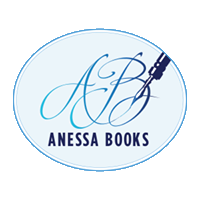My daughter is a Dungeon Master. Nope, that doesn’t mean that she tortures people, it means that she leads Dungeons & Dragons games. In fact, she spends a great deal of her free time playing D&D and writing new scenarios to lead others through. Yes, people have been playing D&D for decades, but it’s gotten a resurgence in popularity and has become quite an industry.
I never played when I was younger because I didn’t know anyone who did—and really, that’s the only way that anyone gets into this game. But now my daughter is trying to drag me into this world. I’ve now played two games with two different groups of people. One was better than the other because in the first game the players were much more interested in the battles, and in the second they were more interested in the characters and spent more time talking to people (both real (the other players in the game) and pretend (through the Dungeon Master)) and solving the mystery. It’s equivalent to books that are plot based or character based. Naturally, I prefer character based books and D&D games.
The basis of a D&D game is, of course, the characters. Each player creates their own character. This is a rather complicated process because there are so many different races and classes, and then sub-classes within those classes. (I made the mistake of showing this blog to my daughter, and she corrected me on that.) For example, the character I created with my daughter’s help was a half-elf druid with an affinity (circle) for the sea, which gave me special powers and spells I could cast. Needless to say, it gets really complicated really fast! (If you play and need help or want someone to create a character for you, my daughter actually sells D&D characters she’s created, or will make one for you, complete with custom art!)
But involved in all this complication is a really interesting way of classifying a person based on how law abiding they are (lawful, neutral, or chaotic) and what sort of person they are in general (good, neutral, or evil). They use this sort of table:

So, if you are a super good person who insists on following the law to the letter, you’d be a “lawful-good” person. Okay with some bending of the rules if it’s for the greater good, you’re a “neutral-good”. Robin Hood (not following the law at all) and you’re chaotic-good. And so on it goes until the most evil person who doesn’t follow the laws at all and is just out for themselves, who can be classified as “chaotic-evil”. There’s a really good article that explains all this in a simple manner for lay people here.
I’m finding this way of thinking about characters really interesting. For those of you who like to know exactly what sort of person your characters are, you might want to use this table and then set characters with opposing types against each other, or, even more fun, put them on the same side and see how they work together.
For example, I’ve got twins in the book I’ve just finished writing (just the first draft, but I’m on my way to being completely done). One twin is definitely a “neutral-good”. She likes following the rules, but in the instance of this book (where her sister is sent to London without her), she is willing to bend the rules in order to be with her twin and watch over her (she secretly comes along to London with her sister). The other twin is probably a “chaotic-good”. She lives by the slogan “carpe diem”. If something sounds like it would be a lot of fun, she goes for it and does it, no matter what the rules dictate. She never means to hurt anyone, only to have fun—which is why her sister is there to take care of her and make sure she doesn’t get into any trouble. Their aunt, who is hosting them, is definitely a “lawful-good”. She can’t stand rules being broken by anyone anytime. It is unacceptable, and yet when she discovers what her nieces have done, she is forced to accept this rule-breaking and even engage in it a bit herself (her growth moments).
Watching these three women deal with the rules and seeing how far they’ll go to break them (or not) is the whole fun of the book. They’re all good, even very good, people trying to do the best they can depending on how they view rules and how far they can be bent.
So, what about your characters? Where do they fall in this chart? Does it help you to think about your characters in this way? If so—or if not—I’d love to hear about it! Please share below!
Next week, I’ll talk about how this sort of classification can apply to you as a writer — fun!!
